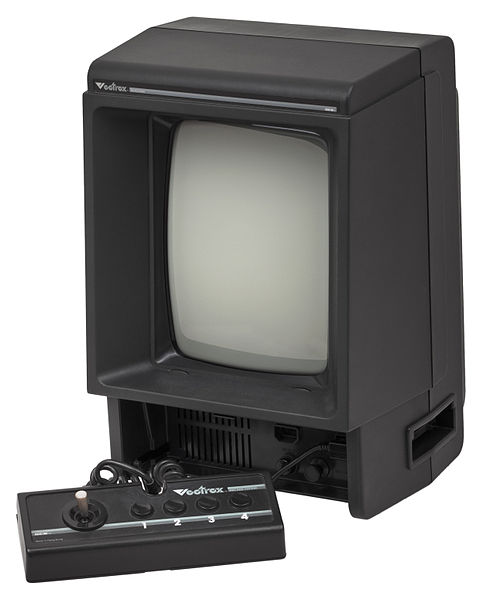Once upon a time, arcade games ruled the Earth. Space Invaders, PacMan, Frogger - these titles and many more cropped up everywhere from your local pub to the fish-and-chip shop at the end of your road. Bright colours, synthesised music and quirky sound effects were the alluring qualities that invited you to insert a 10p coin and immerse yourself in an alternative reality.
The explosion in the popularity of video games was extraordinary. New home consoles such as the Atari 2600 and the CBS ColecoVision quickly appeared and merely had to be hooked up to a TV to enjoy an arcade experience of sorts, but one system went even further with a portable all-in-one system that had its own TV built in.
The Vectrex console was originally launched by American company GCE in 1982, but Milton Bradley (makers of children's games such as Operation, Guess Who? and Twister) soon took over the running of GCE and consequently made the games system its own.
Vectrex was different from the fare being offered by Atari et al. Vectrex comprised of a 9-by-11-inch TV screen housed vertically rather than horizontally in a black plastic case with an integrated cartridge slot and joystick controller. The TV screen was monochrome rather than colour, and the images it displayed were vector line drawings rather than solid, blocky lumps. For colour, tinted plastic sheets had to be slotted in over the screen.
Frankly the whole thing sounds like a rather weak premise, but surprisingly enough, Vectrex proved to be a very good games system that was enjoyable to play. A number of familiar titles were released including Pole Position, Scramble and Berzerk, and shortly before the video gaming bubble burst in 1983, it enjoyed a loyal following among many of its owners.
In the short life of Vectrex, one football title was released - Heads Up - which showed the versatility of the console, if not the ability to create the perfect football game. For one thing, football rises and falls on the fanatic following of the colours worn by the teams. As previously mentioned, Vectrex didn't do colour, so one team (your own in 'human v computer' mode) was displayed in rather brighter lines than the other.
Where playability was concerned, Heads Up suffered from its slowness. Though the player figures were beautifully drawn and animated, they ran around the pitch at a deceptively slow pace. The ball never bounced or crossed the goal line when you scored, and the influence of your controller over the actions of your players was, at times, a little random.
Yet despite all that, there was a considerable charm to this game. Much more than a bunch of connected lines on a screen, the absence of colour doesn't notably detract from its allure. Small details, such as the 'X' on the computer team's shirts and the smaller rendering of players on the far side of the pitch are rather cute in their own way. There's also the sound effects and music - sparse, but of good quality thanks to the chip and speaker system within the Vectrex system.
True, the depiction of football's rules and regulations wasn't strictly correct throughout. After every goal, the teams run out onto the pitch to kick off again and throw-ins actually turned out to be kick-ons, but in many ways that doesn't matter.
On a venn diagram where Tron and Soccer overlap, Heads Up appears in the middle with its skeletal players and glowing footballs. It's a thing of delightful visual beauty, not to be taken seriously and an appreciation of the 'less is more' approach to video gaming, despite its obvious flaws.
Maybe pared-down graphics are due for a renaissance in the modern era of computer gaming. If they are, Heads Up should be rightly cited as a great example of how it ought to be done.
COME ON YOU BRIGHT GREENS!
(Vectrex console image courtesy of Evan-Amos via Wikipedia)













Thanks for the link, Graham! It's the same as the one we embedded in the article... ;-)
ReplyDelete